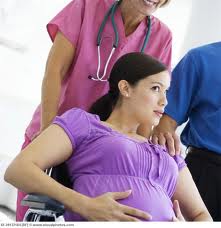The 2012 election cycle has seen unprecedented coverage (and often misinformation) on women’s reproductive health care due to the Affordable Care Act’s immediate impact and nonstop campaign gaffes related to women’s health.
Last Thursday, the National Women’s Law Center (NWLC) launched a new campaign to improve access to women’s health information called This Is Personal. The mission of the campaign is to target, engage and inform younger women about reproductive rights and help disseminate information related to women’s health topics ranging from contraception, maternity care, and what Congress is presently voting on.
It is therefore vitally important that women get involved in the decision-making process to ensure that the women impacted by these deeply personal issues have real world input. “Decisions about women’s reproductive health are personal. Period.” said NWLC Co-President Marcia Greenberger. “These decisions should be a woman’s to make with the important people in her life. The personal beliefs of lawmakers should not trump a woman’s ability to take care of her health.” Despite the private nature of decisions impacting reproductive health care, they are often made at the federal, state or local levels instead of the individual level.
The This Is Personal campaign hopes that through social media, celebrity involvement in videos and satire, young women (and men) will become increasingly active and interactive about reproductive rights. For example, through the new website’s interactive action tabs women can gather more information about state and federal health care decisions, sign petitions and contact legislators.
Decisions about women’s reproductive health care are greatly personal and deserve intimate involvement from women themselves. This Is Personal has a Facebook, Twitter and website with data and satirical videos which should be used as an educational tool and a place for women to educate themselves for the upcoming election. It is also a place where women can actively use their beliefs and knowledge to have their voices heard by decision makers. Sharing of ideas and knowledge is the only way to put decision making into the hands of the women who will be affected by the policies of the 113th Congress.

 Women who are obese before they become pregnant may be putting their child at a disadvantage. New research shows that reading and math scores for kids ages 5 to 7 were lower if the mother was obese before she got pregnant. Obesity can alter how a baby receives nutrients and grows inside the womb.
Women who are obese before they become pregnant may be putting their child at a disadvantage. New research shows that reading and math scores for kids ages 5 to 7 were lower if the mother was obese before she got pregnant. Obesity can alter how a baby receives nutrients and grows inside the womb. We know that many women use contraceptives to prevent unwanted pregnancy often for social, career or economic reasons. In other words, it's not the right time. There are also health reasons for avoiding or delaying pregnancy. The Association of Reproductive Health Professional has identified conditions associated with increased risk for adverse health events as a result of pregnancy. This does NOT mean that all women with these conditions should never get pregnant, but they should have serious discussions with their health providers before they become pregnant, and in some cases, may need to avoid. Conditions that could lead to a complicated or risky pregnancy, putting the woman at risk include
We know that many women use contraceptives to prevent unwanted pregnancy often for social, career or economic reasons. In other words, it's not the right time. There are also health reasons for avoiding or delaying pregnancy. The Association of Reproductive Health Professional has identified conditions associated with increased risk for adverse health events as a result of pregnancy. This does NOT mean that all women with these conditions should never get pregnant, but they should have serious discussions with their health providers before they become pregnant, and in some cases, may need to avoid. Conditions that could lead to a complicated or risky pregnancy, putting the woman at risk include Women take longer to give birth today than did women 50 years ago, according to an analysis of nearly 140,000 deliveries conducted by researchers at the National Institutes of Health.
Women take longer to give birth today than did women 50 years ago, according to an analysis of nearly 140,000 deliveries conducted by researchers at the National Institutes of Health. Higher blood levels of cadmium in females, and higher blood levels of lead in males, delayed pregnancy in couples trying to become pregnant, according to a study by researchers at the National Institutes of Health and other academic research institutions.
Higher blood levels of cadmium in females, and higher blood levels of lead in males, delayed pregnancy in couples trying to become pregnant, according to a study by researchers at the National Institutes of Health and other academic research institutions. pregnant women with gestational hypothyroidism may go undetected each year.
pregnant women with gestational hypothyroidism may go undetected each year. Half of all stillbirths result from pregnancy disorders and conditions that affect the placenta, according to a new report. Risk factors already known at the start of pregnancy—such as previous pregnancy loss or obesity—accounted for only a small proportion of the overall risk of stillbirth.
Half of all stillbirths result from pregnancy disorders and conditions that affect the placenta, according to a new report. Risk factors already known at the start of pregnancy—such as previous pregnancy loss or obesity—accounted for only a small proportion of the overall risk of stillbirth. Seven out of 10 women in Sub-Saharan Africa, South Central Asia and Southeast Asia who want to avoid pregnancy but are not using modern contraceptives report reasons for nonuse that indicate currently available methods do not satisfy their needs, according to new
Seven out of 10 women in Sub-Saharan Africa, South Central Asia and Southeast Asia who want to avoid pregnancy but are not using modern contraceptives report reasons for nonuse that indicate currently available methods do not satisfy their needs, according to new  Male fetuses most vulnerable to alcohol.
Male fetuses most vulnerable to alcohol. Women who tend to have high blood pressure (HBP) should be particularly vigilant if they are on oral contraceptives, are pregnant, or on hormone replacement therapy.
Women who tend to have high blood pressure (HBP) should be particularly vigilant if they are on oral contraceptives, are pregnant, or on hormone replacement therapy.